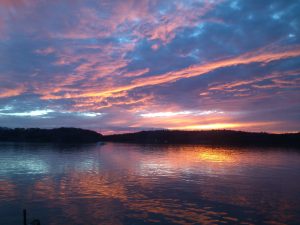Charity Spotlight: This blog post is part of our charity spotlight series and was provided by Chloe Dragon Smith, Ecology North Climate Change Specialist at Ecology North.
If you ask anyone who has spent time in the Northwest Territories (NWT) whether they have experienced climate change, a thoughtful, somber, and knowing look will sweep over their face.
Climate change is affecting the whole country, but up north, big changes have been noticeable for a while. The NWT is one of the fastest warming places on Earth; by examining the northern reality, we can get an idea of what the rest of Canada is in for as climate change progresses.
Climate Change 101
It is important to distinguish between weather (what you see out your window right now) and climate (long-term weather patterns in a given area). Although the weather might be cold one day, or even for a few months at a time, the overwhelming climate trend is warming—and that is where our problem lies.
Climate change can be a natural process; it is caused by changing concentrations of greenhouse gases like carbon dioxide, methane, and water vapour in the atmosphere. Due to the burning of fossil fuels and subsequent release of greenhouse gases, the speed of climate change is accelerating today like never before. That rapid change is what is really surprising northerners and making climate change a part of daily life in the north.
At today’s rate of change, nobody knows exactly how the future will look, but what is clear is that humans, along with all other species on Earth, will have to adapt quickly or face an uncertain future.
Our Climate Reality
Last year, climate scientists from around the world determined that global warming must be kept below two degrees Celsius from baseline pre-industrial levels to manage climate change and global warming. The temperature change in the NWT has already passed this threshold, and it continues to climb.

In southern NWT towns like Hay River and Yellowknife, three to four degrees of warming over 100 years have already been observed. As you travel further north to Inuvik and Tuktoyaktuk, the temperature change has been extrapolated to seven degrees of warming in the past 100 years.
What Does Warming Look Like?
Locals notice unusually warm days year-round. The shoulder seasons, and in particular the fall, are much warmer. The weather is less predictable, more frequent, and extreme. Forest fires have raged, and 2014 was known as one of the most severe fire year on record.
Changes to plants and animals are evident as well, and new species are moving north: bison, cougars, deer, muskox, magpies, and salmon are a few that are often seen out of range. Perhaps the costliest impact in the NWT is the rapid thawing of permafrost, which buckles roads, airstrips, and buildings.
Our Opportunity
Undeniably, the world must work together to slow climate change by mitigating our collective greenhouse gas emissions. This means using cleaner energy, biking or using public transportation, and buying local foods and other products. Any way that you, as a consumer, can lower the amount of carbon that is put into the atmosphere will help to mitigate the problem.
At this point the changes are already visible and along with slowing greenhouse gas emissions, the time has come to adapt. Climate change is going to have to be factored into decisions made in every sector. Big areas for adaptation are ecosystems, health and safety, infrastructure, and culture and heritage. Instead of making decisions with the current climate in mind, the time has come to look down the road to the rapidly changing temperature. For instance, if you are building a house, you might have to adjust certain things like insulation, cooling systems, snow load capacity etc. for it to be viable in ten years. The NWT is a perfect testing ground for this kind of adaptation. The north is a snapshot of southern future, so it is worth keeping an eye on NWT solutions.

Because the changes in climate are so widespread, they have become a rallying cry to the locals of the NWT who rely so directly on the land and their environment. There is an opportunity to work together on a problem that affects all humankind, regardless of status or race. This goes for all Canadians. We are in this together; no one is immune to the changes in climate. To protect our land and our people, climate change has to be on our minds, just ask a northerner.
Ecology North
At Ecology North, we’re an environmental non-profit organization based out of Yellowknife, NWT. Among our other community and environmental goals, Ecology North strives to raise awareness of the impacts associated with climate change in the north, and to drive research and innovation for meeting the many challenges. We’re a group of dedicated people who work with youth, communities, and government to promote sound environmental decision making while teaching youth about the earth, climate change, where their food comes from, and how to keep their water clean. By reaching out to communities across Canada’s north, we hope to mitigate and reverse the crippling reality of climate change for our world today and tomorrow.